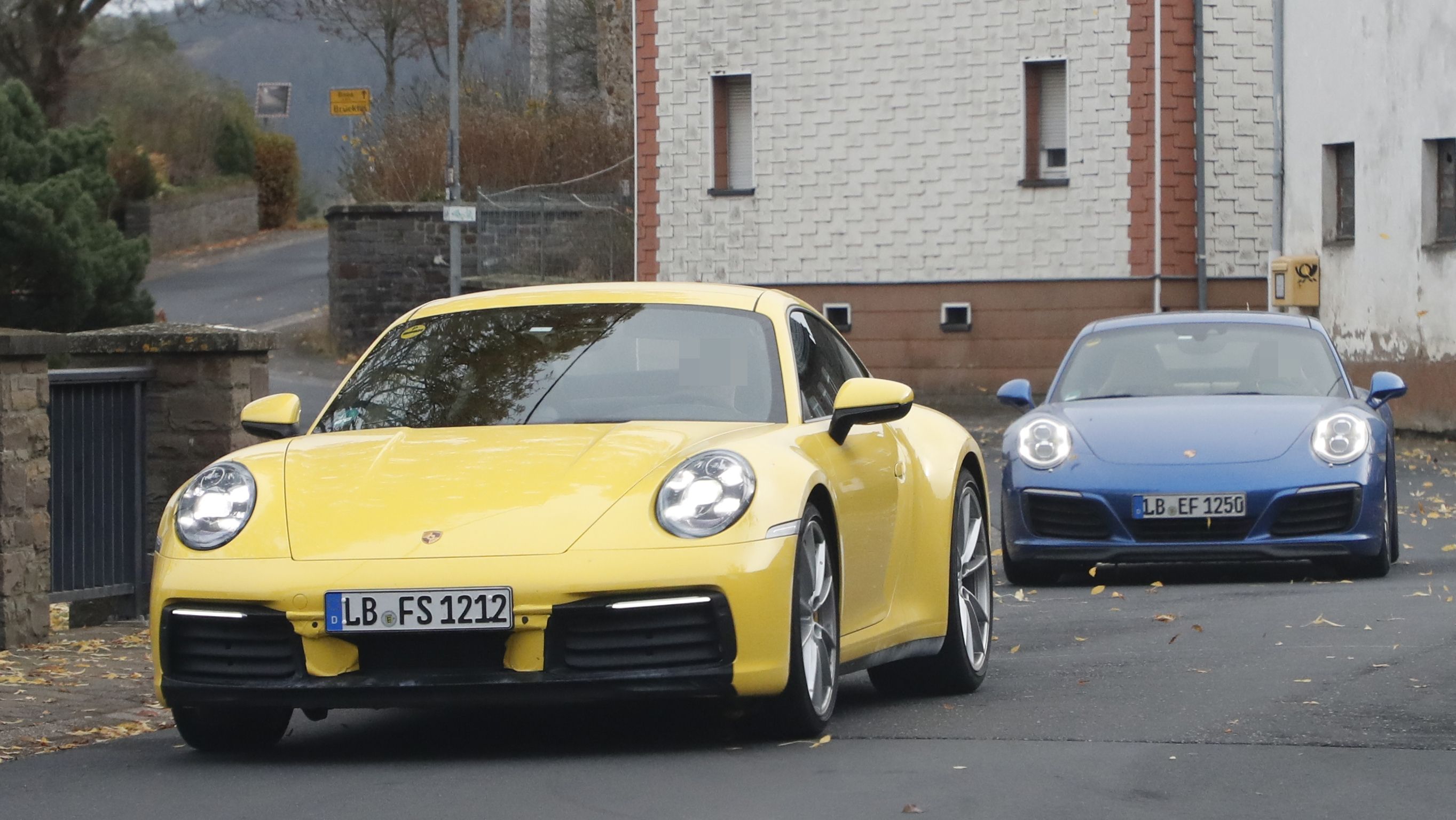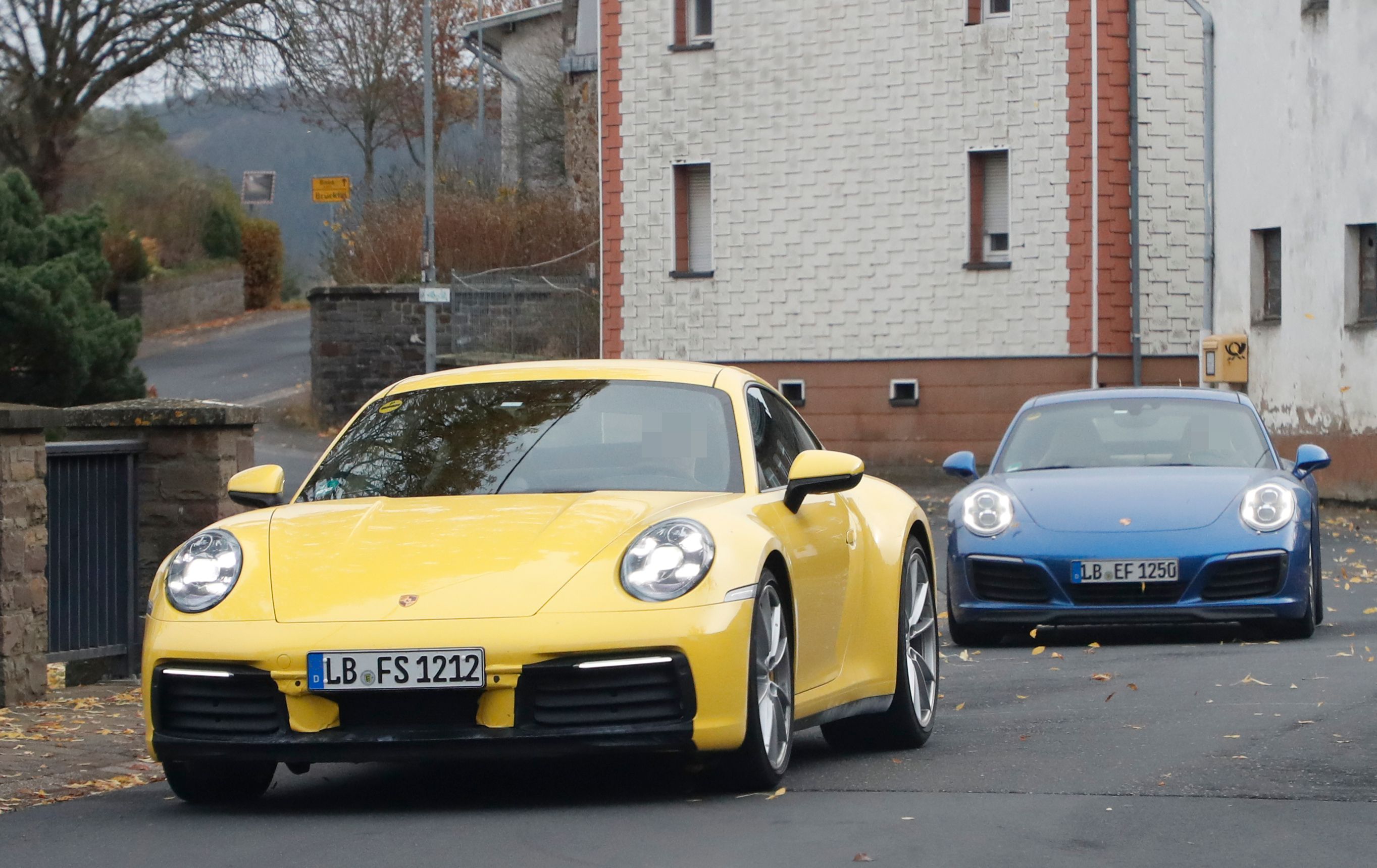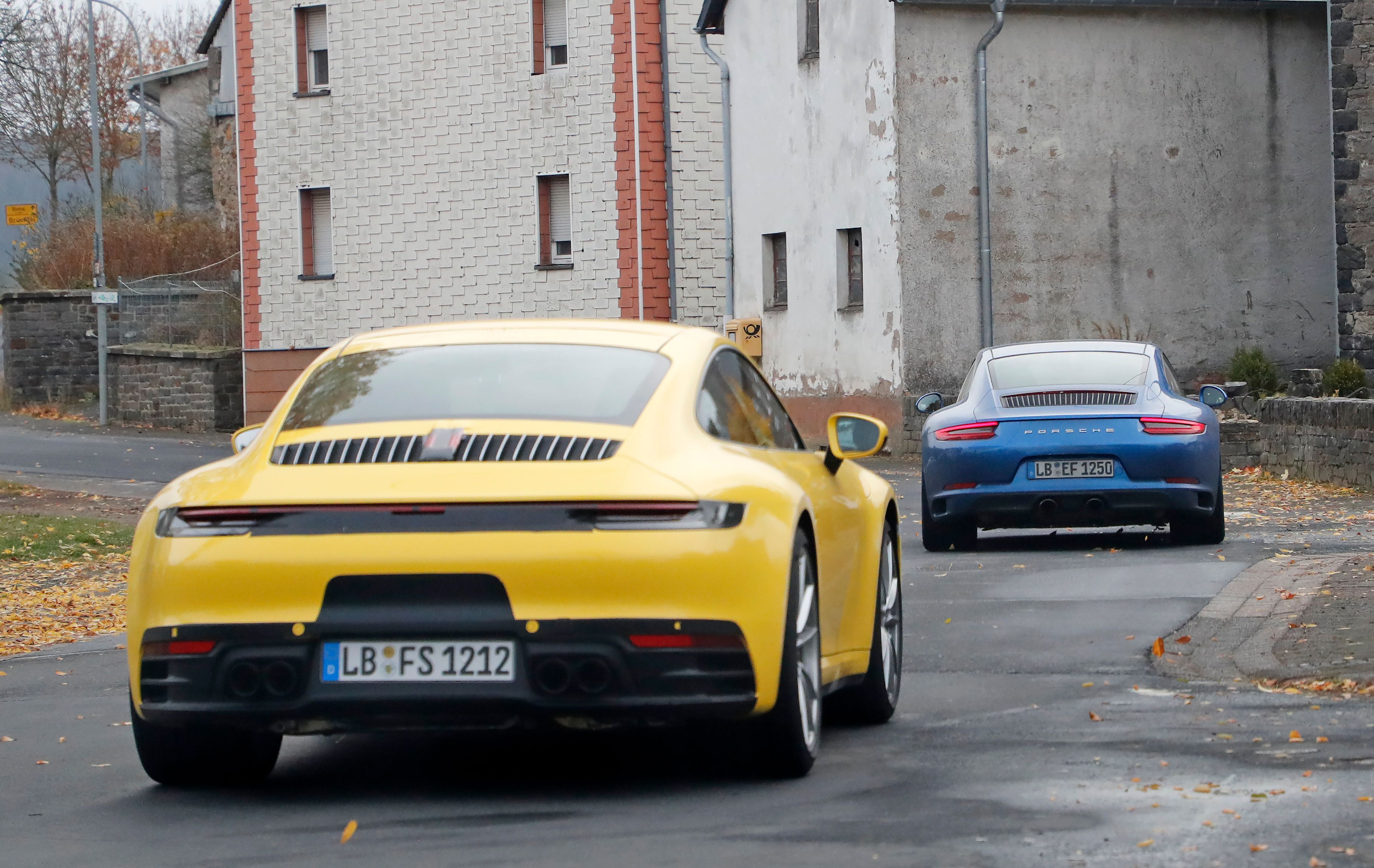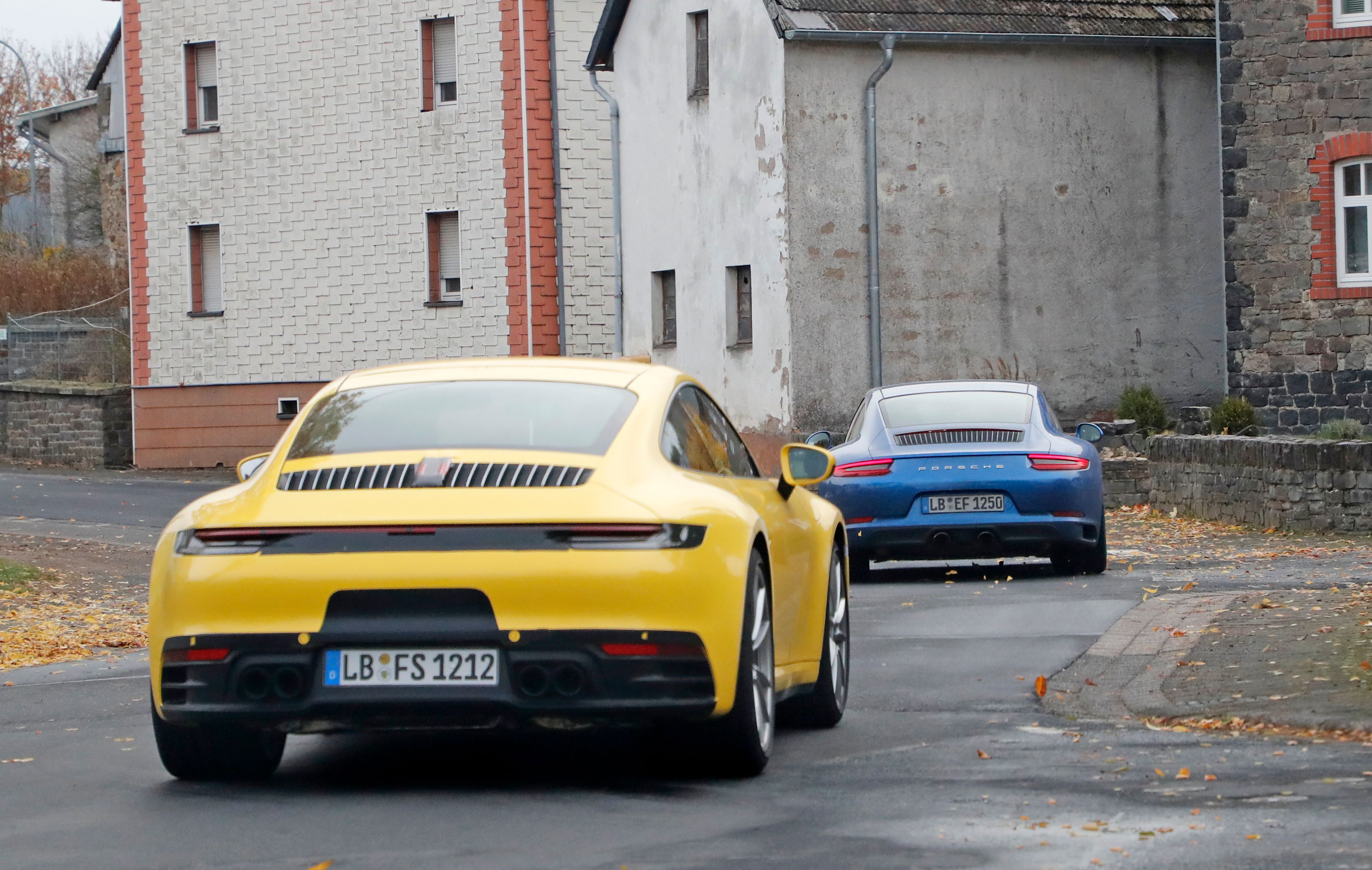Porsche is good to us these days. Many people have been discussing the differences between the current 991-generation 911 and the upcoming 992-generation 2020 911 and, now, Porsche took both out for a spin. This means we've got pictures of them together we can analyze all the little differences since the 992 is basically not wearing any camouflage.
We've been talking about and seeing the new Porsche 911 992 for over a year now. We've even caught glances of the Turbo version and the GT3 version so there's not much room for speculation before Porsche finally reveals their baby at the L.A. Auto Show which will kick off on November 30th.
But, before that, Porsche has offered us the chance to contrast and compare the outgoing generation with the new one. To make things easier for us, as the cars are almost identical, the old one is blue, and the new one is yellow. Thank God they didn't go for two tints of opaque gray!
Keep reading to learn more about the differences between the 991 and the 992
It takes a bit of a detective to find out what's changed between the 991 and the 992
So, here it is, the comparison before all of the comparisons, presumably done by Porsche themselves. A keen-eyed snapper caught the current 991 Porsche 911 and the 992-gen 2020 Porsche 911 driving down the same piece of tarmac and dully captured a few frames of the two cars from the front and from the back. What you'll see are two cars that are, by and large, quite similar, but Porsche worked hard to finesse the shape of the 991 to come up with what we see on the 992.
First up, the front.
Porsche also kept some camouflage around the lower bumper section. That's because the main two elongated grilles have been slightly reshaped on the 992. They are, in short, a bit more squared-off with the inner pillars being less rounded and the outer edge tilted inwards. The indicators are still mounted in the upper side of the vents, but now there's more room between them and effectively the top of the vents themselves.
You'll also notice if you zoom in a bit, that the front hood has hard edges on the new model, meeting the edge of the bumper at an almost 90-degree angle. It's a design element that can be traced back to older-generation 911s. The 991's front hood is visibly more rounded as it meets the bumper in a less clear-cut way.
There isn't much to talk about when it comes to the sides.
Now, here we are at the back. This is, maybe, where Porsche has elected to change the 992 the most when compared head-to-head (or back-to-back?) with the old one. You'll see that the narrow taillights got narrower and have been darkened and that they're connected as we've seen on earlier 997 and 996 models.
What is more, the back bumper is significantly different. For starters, the exhaust inlets have been moved from their central position peaking from right under the bumper, to within the bumper itself on both sides of the number plate. Also, Porsche added a pair of air inlets outboard just below the rear indicators while the 991 only has one inlet on the edges of the rear fascia. Finally, the rear window seems to come straight down, allowing the rear engine cover grille to be slightly wider than on the 991.
Finally, the hybrid should arrive with an estimated 500-horsepower output with help from an 11-kilowatt battery pack. We'll offer extensive coverage of the L.A. Autoshow, so the 911 is very much a car we're looking forward to despite the fact that we've seen it again and again.
Further Reading
Read our full speculative review on the 2019 Porsche 911.
Read our full review on the current 2017 Porsche 911.
Read our full speculative review on the 2020 Porsche 911 Turbo Convertible.
Read our full speculative review on the 2020 Porsche 911 Turbo Coupe.




